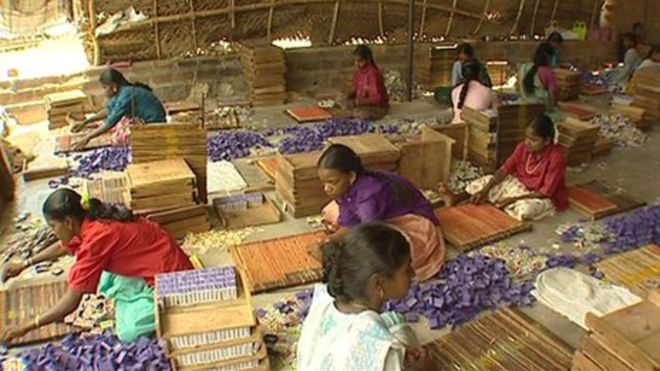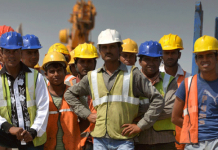This Article is written by Shreya Rathore & Azizal Ludhar BBA LLB(H) specialization in Corporate Laws from University of Petroleum and Energy Studies, Dehradun and the article has been edited by Khushi Sharma (Trainee Associate, Blog iPleaders).
Table of Contents
Introduction
Female labour force engagement and development are intricately linked, involving change in the economic growth, literacy, fertility rates, and social norms, among other variables. It is critical to understand women’s employment. To increase employment quality, policy should target both labour demand and supply. Expanding secondary education is critical, but so is providing jobs for women. One of the most critical aspects is that the females who are addressing the topic of women’s rights and protections in India are doing it positively. Women have battled to achieve social prominence and a respectable position in society from antiquity to the current day. At the time, Indian women were in urgent need of laws that would elevate their social status and provide enough protection from physical and psychological torture. This article contributes to the body of knowledge by examining the relationship between economic growth and women’s economic output in India, a country with significant regional economic, social, and cultural variation. Over the previous three decades, the combination of high economic prosperity has been accompanied with a rise in conservatism and patriarchy. At first appearance, economic growth appears to be slowing. Between 2001 and 2011, the sex ratio, which is viewed as a gauge of how society perceives it, declined from 927 to 914 women. Investing in women’s health has likewise been limited, with maternal mortality increasing just slightly in the recent decade. While considerable improvement has been made, anaemia has risen by six percent points in the first half of the 21st century. Since its beginnings, a law aiming to offer one-third of women’s participation in Parliament has received opposition from a range of political groupings.
Women’s employment is viewed as a key sign of economic opportunities and women’s contributions to economic success. Indian women’s labour participation rate (WPR) has been declining for several decades. It decreased from 29.6 percent in 1983 to 21.9 percent in 2011–2012 and to 16.5 percent as measured by the most recent Periodic Labour Force Survey (PLFS 2017–2018). Not only is the rate of female participation in the labour force decreasing, but so is the absolute size of the female labour force. Women’s diminishing involvement in the labour sector has substantial economic repercussions, given India’s current demographic mix appears to be favourable. India has the world’s youngest working population in the 15–34 age bracket and is currently considered as the world’s youngest country. The advantages of the demographic dividend are more likely to be evaded if women are not employed. It is crucial to underline here that actually entering the labour force does not guarantee women economic security. The quality of employment is especially critical since it reflects the standing of women in the labour force. This article makes an attempt to address the research objectives listed below. They include the following:
1. How does the labour force participation of women in India change in response to GDP growth?
2. What are India’s most significant structural changes?
3. Has women’s workforce employment changed over the course of structural changes? Is women’s labour quality improving?
In many industrialized countries, female labour supply trends follow a U-shaped curve. As per Goldin (1994), female labour supply initially declines with economic success and then rises as a result of systematic changes in the economy, lowering fertility rates, and higher female education. Unlike in most other countries, the female labour supply in India does not follow a ‘U’ form. According to numerous studies based on NSS data from India and elsewhere, employment of women has been falling as the economy has progressed. Most studies demonstrate that increasing women’s household wealth and enrolment in both rural and urban India reduces women’s labour participation rates. Moms are departing the workplace to take care of their children as a result of girls’ greater school attendance. It has been discovered that intelligent women are significantly more likely to marry intelligent men, resulting in their continued unemployment. Numerous studies have documented rural women’s lack of non – farm work opportunities. The mechanisation of agriculture has also resulted in a reduction in the need for female farmworkers. The big female labour force is assumed to be the result of measuring errors and difficulty distinguishing between household activities and contributing family labour. Women are also discouraged from working due to sociocultural conventions. As a result, a variety of factors influence women’s labour-force participation and exit.
According to studies, more women are preferring to stay at home to care for ‘domestic chores,’ stressing the weight of housekeeping and caring tasks on women. As per the OECD research (2019), Indian women worked without payment for 352 minutes every day, while males work 52 minutes. According to several studies, more women work in India’s informal economy, wherein they confront considerable levels of discrimination against women. In this context, the current article examined the relationship between GDP growth and women’s labour participation in India; significant structural changes in the economic growth and their implications for women’s employment structures; and the efficiency of women’s labour as measured by selected metrics.
Indian context
Women’s labour force participation is influenced equally by societal expectations dictating gender roles and responsibilities as it is by economic and structural factors. This section discusses the factors that lead to the deterioration of the Indian situation. The majority of the study presented here is based on individual responses to many NSS survey sessions and is largely focused on the role of education, earnings, employment prospects, and cultural variables on women’s labour market participation. As a result, the underlying causes driving women’s economic behaviour remain poorly understood, and there are no consistent explanations across contexts. Additionally, the factors affecting women’s employment interrelate, making it more difficult to disentangle their effects. For example, the influence of education will be decided by both accessible economic opportunities and the culture that govern women’s work norms. This will be regulated to a certain extent by households’ economic circumstances. Women’s relative unemployment is likely a reflection of their home preferences, which might have class implications in traditional cultures where the father is assigned the responsibility of providing for the family. Working women can imply economic hardship for the family, and when household income increases, women have a tendency to exit the labour force. This is particularly true when men’s economic prospects improve and wage rates rise, allowing women to devote their energies to reproductive work. Poor women bear a double burden of family labour and outside work, providing compelling reasons for them all to be able to transition out of labour as household income increases. On the other hand, highly educated women can afford to employ domestic servants and therefore engage in the labour market. Additionally, economic and cultural factors interact; when women’s salaries increase and societal standards relax, they are more likely to participate in non-economic activities. Women’s labour supply acting as a safety net for households is also consistent with declining female labour participation rates as household economic condition improves. Increased access to education, as indicated by the increase in student enrolment, may account for the decline.
The 2005 National Rural Employment Guarantee Act is a critical issue that may affect women’s labour force participation. It ensures 100 days of employment per year and has requirements ensuring equal wages for women and men, as well as on-site child care. As a result, it has been established that it has a beneficial effect on women’s economic activity. NREGA was found to have a beneficial effect on female labour force participation, with NREGA districts reporting a decrease in female labour force involvement between 2004-05 and 2007-08.
Economic growth and female labour
On the world scene, India is a global economic powerhouse. It was named the world’s fastest-growing significant economy in 2017, with GDP growth over 7% every year since 2011-12. However, 2017 was important for Indian women for another reason: it was the year in which India’s women labour force participation (FLFPR) fell to their lowest point since independence. According to the World Bank, India has one of the lowest FLFLPRs in the world, with only parts of the Arabic world having lower FLFLPRs. GDP is the country’s income. Economic growth helps a country’s standard of living to rise via increasing consumption. Women’s WPR increased by 2.1 percent between 1999–2000 and 2004–2005, while GDP increased by 1 percent. When the GDP increased by 9% in 2009–2010, female employment fell by 4.5 percent. Female employment growth has slowed by 5% in recent years (2017–2018), while GDP has fallen from 7.8 percent in 2011–12 to 5.3 percent. Between 1983 and 2017–2018, the increase in female WPR was negative, suggesting that there is no meaningful association between growth in the economy and female WPR in India. Between 1983 and 2018, female labour force participation growth in rural India declined by 2%, while it fell by 2% in urban India. Between 2017 and 2018, rural India saw the highest decline in female employment levels, at 6%.
According to NSSO data from 1970 to 2018, women primarily work in low-productivity, labour-intensive, home-based, and irregular industries. Between 1977-78 and 2017-18, 88.1% women engaged in agriculture, compared to 80.6 percent of rural men.
Women have concentrated their efforts in fields such as nursing and teaching, which provide limited opportunities for growth. Neither urbanized nor rural women were able to considerably increase their participation in the secondary sector.
Way forward
Women’s labour force distribution across the economy exhibits some noteworthy traits. Women are employed in the agricultural sector at the highest rate (68.4 percent), followed by the service sector (15.8 percent). Eastern nations, which are some of the poor, demonstrate significant patterns of female engagement in a wide variety of industries. Women are much more likely than men to work in this industry of construction in the north-east. In western states, women are less likely to work in this industry of construction than in any other region. There has been a dramatic movement in the sectors in which women work over the previous twenty-five years. Agriculture’s nationwide decline has resulted in a 15% decline in the number of women employed, whereas the percentage of females employed in all other sectors has increased. In the previous five years, the share of women employed in the construction business has virtually tripled. This is unsurprising given the sector’s rapid growth and demand for manual labour. NREGA may have resulted in a rise in the employment of women in the construction industry. Similarly, women’s employment in manufacturing and services has climbed by 60% and 23%, significantly. The pattern is constant across regions, with a few outliers. Both in the central and north-eastern states, women’s involvement in manufacturing has decreased.
Male workers have learned that immaculate work-life integration is possible in the face of a pandemic-induced remote working environment. Workplace flexibility is critical for women’s right to choose employment, even as India Industries expands its diverse and inclusive programs, such as improved maternity leave and mandatory paternity leave. Because women’s labour supply responds more to take-home earnings than men’s, reduced income taxes for females can boost participation.
Women Entrepreneurship Promotion: The creation of new jobs is desperately needed. However, empowering more women to enter their own enterprises is a lengthy solution. Promoting women towards becoming entrepreneurs has the potential to benefit both the economy and society in India. In 2016, UN Women launched the “Making Every Women and Girl Count” Initiative to better prioritize gender data. In India, a similar approach is necessary.
Conclusion
India has undergone substantial changes over the last twenty-five years. Among other things, the country has experienced significant economic expansion, marked by rapid urbanization, an increase in educational attainment, and declining fertility rates. During the same time period, however, women’s economic activity has been declining steadily and over time. Between the ages of 25 and 59, the share of women in the labour force has declined by 23%. This proportion has been significantly higher in several of India’s poorest regions. Several economic and social factors influence women’s decision to work and ability to work at both the home and macro-level. Literacy, fertility, and age are three of the main worldwide drivers. Marriage, urbanization, and economic growth are all factors to consider. In Aside from these obstacles, social traditions defining women’s positions in the public realm continue to have an impact on outcomes. Much of the downward trend discussion in India has centred on four primary reasons:
- growing young people’s education
- lack of work prospects;
- household effects
- measuring.
As can be observed, the mix of economic growth has an impact on the speed of female labour force participation. India’s economic growth has been lagging in terms of employment creation. This will almost certainly have a greater influence on women’s opportunities than on men’s. Agriculture and manufacturing have historically been labour-intensive businesses, but have not been the primary drivers of India’s economic growth. Although the service sector has developed into a critical engine of growth, it requires advanced skills that the majority of women lack. These data suggest unequivocally that economic development alone is insufficient to increase women’s economic participation. The process of growth is equally critical. Policies that foster growth in “women-friendly” industries are critical for women’s labour force participation to increase. The challenge in comprehending women’s economic growth is that it is influenced to a greater extent than men’s economic activity by both market pressures (external factors) and household and family setting (internal forces). A distinct set of measures will be required to push women to overcome social barriers to labour force participation. India has made considerable strides in increasing female education access, with an increase in the number of women of working age attending school.
LawSikho has created a telegram group for exchanging legal knowledge, referrals, and various opportunities. You can click on this link and join:
https://t.me/joinchat/J_0YrBa4IBSHdpuTfQO_sA
Follow us on Instagram and subscribe to our YouTube channel for more amazing legal content.
 Serato DJ Crack 2025Serato DJ PRO Crack
Serato DJ Crack 2025Serato DJ PRO Crack










 Allow notifications
Allow notifications



